Exploring Awesome Bird Cages: A Guide for Pet Lovers
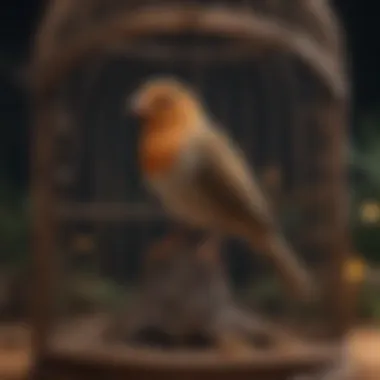
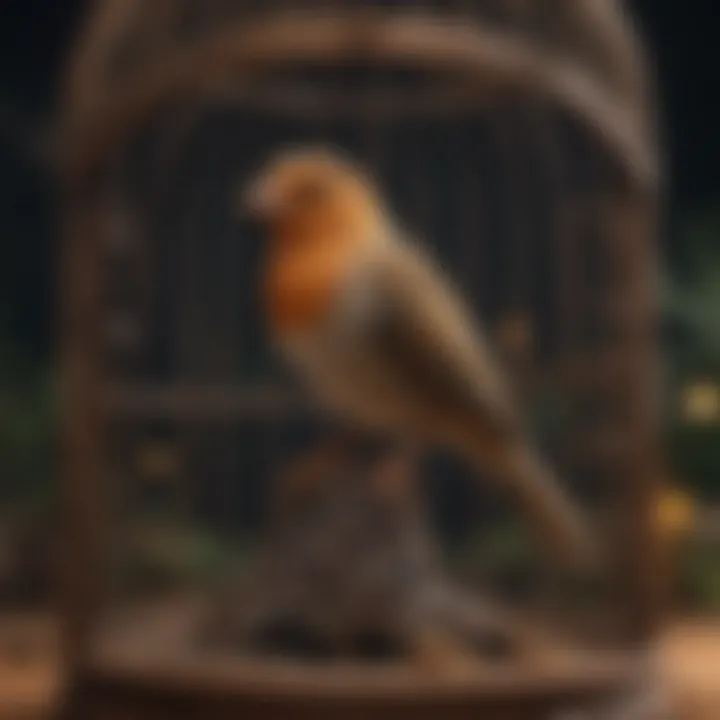
Intro
Birds have long fascinated humans with their vibrant colors and intricate behaviors. As such, providing them with an appropriate habitat is crucial. This guide aims to explore the essential aspects of bird cages—discussing their importance, care, and enrichment. Many pet lovers may wonder what the right cage looks like and how to make an informed choice that suits both their avian companions and their personal preferences. We will cover various types of bird cages, what to consider when selecting one, and the socio-emotional benefits they offer to birds and their owners alike.
Pet Care and Grooming
The first step to ensuring a healthy and happy environment for your bird is through proper care and grooming. While birds are relatively low-maintenance compared to other pets, routines still matter. Regular care not only aids in their physical health but also improves their mental well-being.
Importance of Regular Care
Maintaining a clean cage is paramount. A dirty environment can lead to infections or illnesses. Daily checks for food and water, along with weekly cleanings of the cage, are essential practices. Fresh food and water are vital for overall health, while cleaning helps prevent disease.
Grooming Techniques by Pet Type
Different bird species require unique grooming approaches. For example, a parakeet may need its feathers trimmed to prevent injuries from flying into objects, while a cockatiel may benefit from occasional baths to keep its feathers in top condition. Owners should research specific grooming needs based on their bird species.
Tools and Products Recommendations
Investing in the right grooming tools can simplify the process. Consider a specialized bird-safe shampoo, nail clippers designed for birds, and a quality cage cleaning spray. These products contribute to better overall care.
Seasonal Care Tips
Seasonal changes can impact your bird’s needs. For instance, during winter, it is essential to ensure the cage is kept in a warm area of the house. In spring and summer, birds appreciate cooler areas and ventilation. Adjusting care routines to align with seasonal changes helps promote comfort and health.
Health and Nutrition
Providing nutritious food and understanding avian health are integral. Birds have specific dietary needs that vary significantly among species.
Understanding Pet Nutrition
A balanced diet that includes seeds, pellets, fruits, and vegetables will promote good health. Different birds, like parakeets or canaries, have distinct dietary requirements that should be understood.
Common Health Issues by Species
Different species of birds face different health challenges. For instance, cockatiels are prone to respiratory problems, whereas budgerigars may have issues with feather plucking. Regular check-ups can help detect issues before they escalate.
Preventive Care and Regular Check-Ups
Veterinary visits should not be overlooked. Schedule regular check-ups to monitor health, receive vaccinations, and have some form of a wellness exam.
Food and Dietary Advice
Formulate a diet based on knowledge of what your bird needs. For example, some birds thrive on a seed mixture, while others may require a more pellet-based diet. Consult with an avian vet for tailored advice.
Behavioral Training
Training your bird can lead to a more harmonious relationship between you and your pet. Understanding how to use positive reinforcement can yield effective outcomes.
Basics of Positive Reinforcement
Positive reinforcement involves rewarding desirable behaviors, shaping your bird’s actions through treats or praise. This method fosters a trusting bond between owner and pet.
Training Techniques Users Can Apply
To train a bird, begin with simple commands like
Understanding the Role of Bird Cages
Bird cages play a significant role in the lives of pet birds and their owners. Understanding their function goes beyond mere containment; it encompasses the well-being of avian companions and the responsibilities of the caretaker. This section highlights the purpose and importance of bird cages in a comprehensive manner, offering insights and considerations that every bird owner should ponder.
Purpose of Bird Cages
The primary purpose of bird cages is to provide a safe and secure environment for birds. Unlike other pets, birds have unique needs. A cage that is suitable caters to their instinctive behaviors, such as flying, climbing, and even nesting. A well-designed cage acts not only as a shelter but also as a play area where birds can express their natural instincts.
- Safety and Security: Ensuring that your bird is protected from predators and environmental hazards is fundamental. A good cage provides peace of mind for pet owners, knowing their bird is safe.
- Comfort: The cage design impacts the comfort of the bird. Adequate space, suitable perches, and features that mimic natural environments can enhance a bird’s quality of life.
- Health Maintenance: A suitable cage helps in maintaining the bird's health. A fresh supply of air, appropriate lighting, and space for movement can prevent many health issues related to stress and confinement.
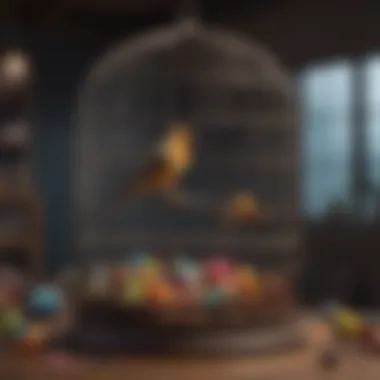
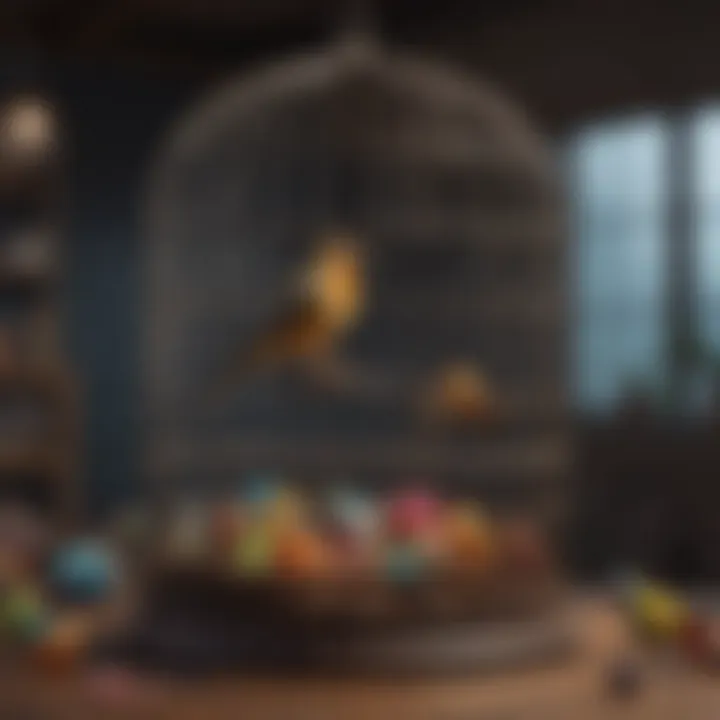
Importance of Space
Space in a bird cage is critical. It determines how freely a bird can move and engage in various behaviors that are essential for its mental and physical health.
- Physical Activity: Birds need room to fly and exercise. A cramped cage limits their movements, leading to obesity and other health problems.
- Behavioral Health: Sufficient space allows birds to exhibit natural behaviors. When they have room to explore their environment, they are less likely to develop issues like feather plucking or excessive vocalization.
- Social Enrichment: Space also allows for social interaction. If you have multiple birds, adequate space ensures that they can interact without feeling threatened or stressed.
Types of Bird Cages
Understanding the different types of bird cages is essential for pet owners. This section explores the various cage designs available, highlighting how each one serves unique needs for different avian species. Choosing the right cage type is not only about aesthetics but also about ensuring the well-being and comfort of your pet. Here, we will look into basic cage types and specialized cages, focusing on their specific elements, benefits, and considerations.
Basic Cage Types
Single-unit cages
Single-unit cages are among the most common types of bird housing. These cages are designed for one bird, which makes them a practical choice for pet owners who have a singular feathered companion. The primary characteristic of single-unit cages is their compact design. They can fit well within various home spaces without demanding too much room.
A key advantage of these cages is their ease of maintenance. With only one bird to accommodate, cleaning routines can be simpler and faster. However, a disadvantage can arise if a bird requires more social interaction than a single cage can provide. This aspect is crucial, especially for social species like parakeets or lovebirds which may thrive better in pairs.
Multi-unit cages
Multi-unit cages are designed to house more than one bird. This type of cage is beneficial for owners who have multiple birds or for those who wish to introduce new companions. The defining feature of these cages is their modular design, allowing for several compartments within a single structure. This helps to keep each bird separate while still providing them the opportunity to see and interact with one another.
The benefit of a multi-unit cage is the ability to cater to socialization needs and reduce loneliness among birds. Nonetheless, a key consideration is that the layout may complicate cleaning tasks, as each section will require attention. Selecting the right combination of birds is also essential to prevent potential conflicts or stress.
Flight cages
Flight cages are specifically designed to provide ample space for birds to move freely. Unlike traditional cages, flight cages are often taller and wider, allowing for flight and exercise. This design is particularly advantageous for larger species or those that require significant space to fulfill their natural behaviors. The spacious characteristic of flight cages promotes physical health and mental stimulation.
However, they can be more costly and may require more room in the home. Owners must also consider the need for additional accessories like perches and toys, which are essential to create an enriching environment. Overall, flight cages are a suitable choice for avian species that thrive on space.
Specialized Cages
Specialized cages cater to specific needs beyond the basic functionalities. These options can greatly enhance the living quality for certain birds. Each specialized cage type has unique characteristics and requirements, which we will explore next.
Aviaries
Aviaries are large, open spaces that mimic a natural habitat. They allow birds to fly freely and socialize without restriction. The key feature of aviaries is their spaciousness. They can accommodate multiple birds and provide features like branches and plants for a natural setting. The benefit of aviaries is the enriched environment, fostering natural behaviors and social interaction.
However, aviaries demand significant maintenance and require a suitable location. They are more ideal for those who can dedicate time and resources to upkeep. It is also vital to ensure proper security from predators and protection from the elements.
Indoor-outdoor cages
Indoor-outdoor cages bridge the gap between indoor living and outdoor experiences for birds. These cages typically feature a secure design that allows birds to safely enjoy the outdoors. The essential aspect of indoor-outdoor cages is their adaptability, often integrating both indoor elements and outdoor features.
These cages can provide benefits such as fresh air and sunshine, promoting a healthy lifestyle. One challenge, however, is ensuring they are protected from extreme weather conditions or predators. Choosing the right location and ensuring safe access are key considerations.
Travel carriers
Travel carriers offer a safe way to transport birds. They are smaller and designed to be portable, making them suitable for relocating birds during vet visits or vacations. The key outstanding feature of travel carriers is their compact size and secure casing. This enables easy handling while ensuring birds are well-protected.
The advantage of travel carriers is their convenience, allowing owners to safely transport birds with minimal stress. However, they are not intended for long-term use, as birds cannot comfortably live in them. It is vital to transition birds back to their primary cages after travel to ensure their well-being.
Choosing the Right Cage
Choosing the right cage is a fundamental aspect of providing a suitable habitat for pet birds. The type of cage influences your bird's quality of life and overall well-being. A well-selected cage allows for adequate movement, safety, and social interaction. It is essential to consider the specific needs of your bird species, as well as your personal preferences. Making informed choices can greatly enhance the comfort and happiness of your avian companion.
Cage Size Considerations
Cage size is among the most critical factors when selecting a bird cage. A spacious cage allows birds to spread their wings, move freely, and engage in natural behaviors. Different species of birds have varying space requirements, so understanding these needs is vital.
For example, larger birds like parrots generally require more space than smaller finches. Moreover, a cage that is too small can lead to stress, aggression, and health problems. It is recommended to provide a cage that is as tall as it is wide, allowing for vertical movement and play. Always check specifications based on breed size to ensure your bird has adequate space.
Material Options
Material plays a major role in the durability and safety of a bird cage. Each type presents distinct qualities that cater to various bird species and owner preferences.

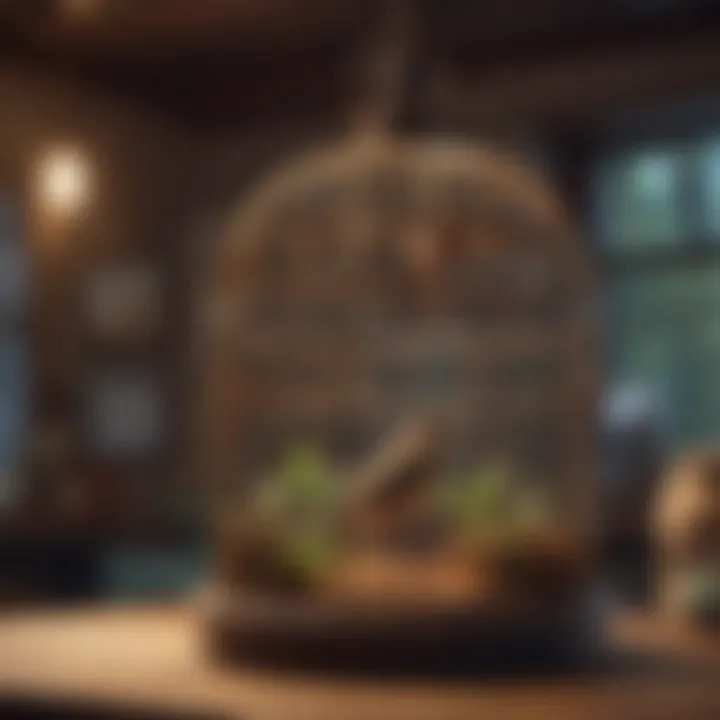
Metal cages
Metal cages are often favored for their strength and longevity. These cages do not easily break or become chewable. Common materials used include stainless steel and powder-coated metals. Stainless steel is resistant to rust and corrosion, providing a safe environment for birds. It is also easy to clean, which enhances hygiene. However, some metal cages may have sharp edges that pose risks. Proper inspection before purchase is essential.
Plastic cages
Plastic cages present a lightweight alternative, making them easy to move. They often come with colorful designs that can appeal to owners. Plastic cages are usually less expensive and convenient for short-term use, such as travel. However, they may not withstand a bird's chewing tendencies as effectively as metal. Over time, plastic can absorb odors and may not hold up under rigorous cleaning. Consider these factors for longer-term housing needs.
Wooden cages
Wooden cages offer a more natural look and feel. They can provide a comfortable environment for pet birds with a classic aesthetic. Wooden cages often come with various designs and can be large enough for multiple birds. However, they require more maintenance due to the risk of mold and rot, especially if spills occur. Proper sealing and regular inspections are necessary to keep the cage safe and functional for your bird.
Bar Spacing and Design
Bar spacing is another crucial element to consider when selecting a cage. The spacing should be small enough to prevent your bird from escaping or getting stuck while allowing for climbing and play. Generally, a spacing of half an inch works well for small to medium-sized birds. For larger birds, the spacing can be wider, but it is essential to research specific needs based on the breed.
The design of the cage also contributes to usability and comfort. Cages with horizontal bars encourage climbing and exercise, while those with smooth interiors are safer and easier to clean. Pay attention to door design as well. Cages that are easy to access benefit both the crew and the bird. Ultimately, thoughtful design choices lead to a more enriching environment.
“A well-chosen bird cage can provide a sanctuary that meets the needs of the bird and the owner alike, supporting an engaging environment for both species.”
Features to Consider
Understanding the features of bird cages is essential for anyone who wishes to provide a comfortable and healthy habitat for their feathered friends. The right features can enhance the living experience for birds, ensuring their well-being and happiness. This section explores the importance of cage accessories and hygiene, both crucial for creating an ideal environment.
Cage Accessories
Cage accessories significantly influence the quality of life for pet birds. Selecting suitable accessories can ensure that birds remain active, stimulated, and comfortable within their cages.
Perches
Perches are fundamental components of a bird cage. They provide birds with a place to rest and are vital for their physical health. Perches come in various materials, including natural wood and man-made substances. Natural wood perches are popular because they mimic the natural environment of birds. These perches offer numerous advantages, such as flexibility in shape and varying diameters that promote foot health.
However, it is crucial to avoid synthetic options that may not offer the same benefits. A clear downside is that perches must be cleaned regularly to avoid bacteria buildup, but their contribution to the well-being of birds makes them worth the effort.
Food and Water Dispensers
Food and water dispensers are vital for maintaining the diet and hydration of pet birds. They need to be accessible but also designed to minimize waste. A key characteristic of these dispensers is that they can be designed to prevent contamination, making them popular among bird owners.
Dispenser types may include gravity-fed systems or feeding bowls. The unique feature of these containers is that they help to keep food fresh and water clean. However, a disadvantage is that they must be checked frequently to ensure that the bird has enough food and clean water, especially in warm weather.
Toys and Enrichment Tools
Toys and enrichment tools play a significant role in keeping birds engaged and preventing boredom. Birds are intelligent creatures, and providing them with various toys can enhance their mental stimulation and keep them physically active. The key characteristic of these tools is their ability to mimic natural behaviors, like foraging and climbing.
Items can include swings, ladders, and chew toys made from safe materials. A clear advantage of using enrichment tools is that they can reduce stress and promote healthy behaviors. Conversely, some toys may wear out or pose risks if not monitored closely, particularly if they are damaged.
Cage Hygiene and Maintenance
Maintaining hygiene in a bird cage is essential for the health of pet birds. Regular cleaning can prevent the spread of disease and keep the environment safe. Effective maintenance practices should include removing waste, cleaning food and water containers, and disinfecting the cage regularly. Not only does this practice promote a healthier habitat, but it also creates an overall better atmosphere for both birds and their owners.
The effort put into maintaining cleanliness directly correlates to the longevity of the cage items and the health of your birds. For the responsible pet owner, understanding and implementing proper hygiene protocols should be a top priority.
Customizing Bird Cages
Customizing bird cages is a critical aspect for all pet owners looking to enhance their feathered companions' quality of life. It allows for adjustments that cater to the unique needs and preferences of different bird species. Customization not only assures that the cage suits the bird’s physical requirements but also addresses their psychological well-being. Birds are social creatures and benefiting from an enriching environment can greatly improve their overall happiness and health.
Modifying for Comfort
Adjusting a bird's cage for comfort involves several factors, including placement of perches and the type of bedding used. Birds need a safe and cozy place to rest as well as areas where they can exercise. This means providing ample perches at comfortable heights and ensuring they are made from suitable materials that prevent foot stress.
One key characteristic of comfort modifications is the use of soft bedding or mats. This provides a cushioned area for birds to relax and play. The right bedding material prevents the accumulation of waste and is easy to clean, which is essential for maintaining hygiene. Moreover, the configuration of these elements promotes a secure feeling for the bird, reducing stress and anxiety.
Creating a Stimulating Environment
Different perch heights


Having perches at varying heights mimics a bird's natural habitat, where they often perch on different surfaces. This particular aspect of cage customization is important as it encourages climbing and exercise. Perches at different heights can enhance the bird's physical agility and can also stimulate mental activity.
The key characteristic of different perch heights is versatility. Birds tend to feel more at ease in spaces that are reminiscent of their natural surroundings. Furthermore, it allows them to showcase their natural behaviors, fostering a happier disposition.
However, it is necessary to ensure that the perches are spaced properly and securely attached to avoid accidents. This can potentially reduce the stress and risk of injuring themselves while exploring.
Changing layouts
Altering the layout of the cage can introduce novel experiences for birds. This aspect of customization can break the monotony and keep your pet engaged. The key characteristic of changing layouts is adaptability, which involves periodically rearranging food and water dishes, toys, and perches. Such changes can enliven the bird's environment, promoting exploration.
Incorporating new elements or shifting the existing ones enhances the overall interest for the bird. Many avian instructors recommend changing the layout every few weeks. This helps in preventing boredom but be cautious not to overwhelm your bird with too many changes at once. A rapid shift can lead to anxiety.
Ultimately, customizing bird cages becomes a balancing act. The goal is to create a space that is both functional for the pet owner and stimulating for the bird. As responsible pet lovers, we must consider how alterations can impact their psychological state and well-being. Paying attention to every detail in customization leads to a more fulfilling and healthier life for our avian friends.
Legal and Ethical Considerations
When selecting a bird cage, understanding the legal and ethical considerations is crucial. These factors not only affect the appropriateness and safety of the cage but also influence the overall well-being of pet birds. Ignoring such elements can lead to unintended consequences for both the pet and the owner.
Regulations on Bird Ownership
Bird ownership often comes with specific legal requirements. These laws vary by region and are designed to protect both the animals and the general public. Owners should be aware of local legislation regarding pet avian species, which may include restrictions on specific types. For instance, some areas may require permits for exotic birds.
In addition, laws about housing conditions often exist. Ensuring that the bird's living space meets these conditions is not only a legal issue but a matter of ethical responsibility. Owners should verify that the cage design and dimensions comply with the standards set by local regulations.
Ethical Sourcing of Cages
Ethical sourcing means acquiring products in a responsible manner. When it comes to bird cages, this concept includes choosing manufacturers who prioritize sustainable materials and humane labor practices. Supporting brands that use responsibly sourced materials reflects a considerate attitude towards environmental and social implications.
Furthermore, potential bird owners should consider the impact of their purchase choices on the planet. Selecting cages made from recycled or eco-friendly materials can significantly lessen one's carbon footprint. This decision demonstrates a commitment to environmental stewardship, which is integral in today's society.
Being informed about both the legal aspects and ethical sourcing of bird cages helps foster a responsible ownership culture.
By considering these legal and ethical aspects, pet owners not only ensure compliance but also contribute positively to the welfare of their avian companions.
Social and Emotional Benefits
Understanding the social and emotional benefits of keeping birds is crucial for thier well-being. Birds, like other pets, experience feelings, and creating a nurturing environment aids in their overall health and happiness. Realizing how your relationship with your bird can enhance its emotional state is essential for any bird owner.
Enhancing Bird Well-being
Birds are social creatures that thrive on interaction, both with their species and bur their human companions. Providing an enriching environment is key to their overall well-being. Here are some ways to enhance bird well-being:
- Social Interaction: Regular interaction with owners can decrease stress and promote happiness. Talking to them or spending time nearby can enhance their sense of security.
- Space for Movement: Ensuring there’s enough room inside the cage for the bird to stretch its wings is vital. Birds need to move to maintain physical health.
- Mental Stimulation: Toys and activities that encourage play and exploration are important. Birds enjoy puzzles and challenges that stimulate their minds.
Providing stimulation helps combat boredom, which can lead to behavioral issues.
Incorporating these elements into their daily life can result in a healthier and happier bird, positively influencing their emotional state.
Connecting with Avian Companions
The connection between birds and their owners goes beyond basic care. Building a bond can be enriching for both parties. Here, we explore how to deepen that bond:
- Routine Communication: Regularly talking to your bird can help develop trust. Birds often learn to recognize their owner’s voice and respond to it, creating a stronger connection.
- Understanding Body Language: Birds communicate a lot through their body language. Learning their cues can help owners respond effectively, enhancing the bond.
- Hands-On Interaction: Acclimating your bird to gentle handling can create a more connected experience. Start slowly by letting them perch on your finger before moving to more involved interactions.
Creating a strong connection with your bird fosters a sense of partnership and companionship, benefiting both the owner and the bird. This relationship not only improves the pet’s emotional health but also enriches the life of the owner. Developing these social aspects adds immense value to the experience of owning a bird.
Culmination
In this article, we explored the various elements surrounding bird cages and their significance in the lives of pet birds and their owners. It is essential to recognize the roles that bird cages play beyond mere containment. They serve as habitats that can greatly influence a bird's physical and psychological well-being. When selecting a cage, factors such as size, material, and design should all be carefully evaluated. A well-chosen cage ensures that birds have sufficient space to move, play, and engage in natural behaviors.
Now, let’s summarize some key points that were discussed throughout the guide. Proper understanding of these points is vital for anyone looking to provide the best environment for their feathered companions.
Summary of Key Points
- Purpose of Bird Cages: Cages are designed to provide safety and space for avian pets while mimicking their natural environment as much as possible.
- Types of Cages: Familiarity with the different cage types, such as flight cages and aviaries, allows pet owners to select the best option for their bird’s needs.
- Choosing the Right Cage: It is crucial to consider the cage size, material, and design to ensure it meets the specific requirements of the bird species.
- Features to Consider: Enhancements like accessories and proper hygiene practices contribute to a healthy living environment.
- Customization: Tailoring the cage environment can create a stimulating space that promotes happiness and mental well-being.
- Legal and Ethical Considerations: Awareness of bird ownership regulations and sourcing cages ethically is vital for responsible pet ownership.
- Social and Emotional Benefits: Engaging with birds leads to significant emotional enrichment for both the pet and the owner, fostering a strong bond.
Future Trends in Bird Cages
The bird-cage industry is evolving, with new designs and materials emerging that cater to the changing needs of pet owners. Future trends may include:
- Sustainable Materials: As environmental awareness grows, there may be a shift toward cages made from eco-friendly materials that do not compromise safety or durability.
- Smart Cages: The integration of technology, such as sensors monitoring temperature and humidity levels, can enhance bird care. These features can provide alerts for any significant changes that might affect a bird's health.
- Modular Designs: Cages that allow for customization and expansion can meet the dynamic needs of bird owners, enabling them to adjust the environment as their birds grow or change.















